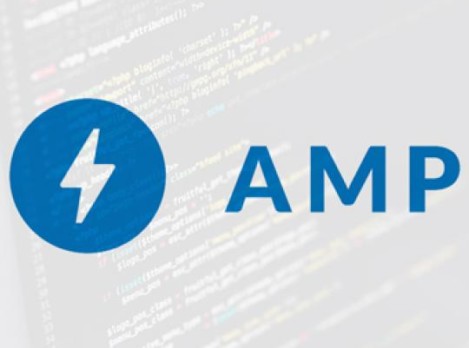AMP (Accelerated Mobile Pages) is a new web technology that was introduced by Google in late 2015 and first appeared in early 2016. According to Google, AMP now powers over 2 billion web pages covering almost a million domains. So, what’s so great about an AMP page?
AMP was designed to drastically improve load speed on mobile devices for a faster, more engaging experience on the web. Chances are, you have already opened an AMP page without realizing it. Most news platforms like CNN and The Washington Post use AMP to serve their news articles to mobile users. You can distinguish a link to an AMP page from a link to a regular page by looking for the AMP icon, a lighting bolt inside a circle.

The AMP icon generally appears near the webpage’s link. When you open an AMP page, either from the Google search results page or from social media platforms like Facebook, the page should load instantly. This happens because the HTML code on AMP pages has been restructured to serve only what is required to read that particular page or article. Design elements like image backgrounds and animation effects are stripped down or simply removed to decrease load time and improve the mobile experience.
When a webpage is build using the AMP protocol, AMP will provide a way to seamlessly navigate from article to article with a swipe of the thumb on your mobile screen.
Why You Should Be Using AMP Pages on your Website
AMP provides some great advantages for conversions and overall user experience. Here are the 3 main reasons why you should consider implementing AMP pages on your website.
Faster Loading Time
This is a must on any website, regardless of the industry. In a mobile-driven world, people look to their phones for information, and they want that information fast. Your website cannot afford to take longer than 3 seconds to load. If it does, you risk losing a visitor to your competitor’s site that loads faster than yours. AMP was created specifically to improve page speed and most AMP pages will load twice as fast as a regular mobile page, providing a huge advantage over non-AMP pages and a much better user experience for your visitors.
Improved Visibility in SERPs
Currently, AMP pages are not an organic ranking factor (aside from the fact that it is a mobile-friendly page) nor do they increase your page or domain authority. However, using AMP for your webpages can improve visibility by including your AMP pages (usually blogs or news articles) in a sliding carousel in the search engine results pages. But, since AMP is a Google product, you can most likely expect changes in the search algorithms soon that will give priority to pages that are using the AMP protocol, similar to the mobile-friendly algorithm change back in 2015 that was dubbed “Mobilegeddon”.
Lower Bounce Rate
This goes hand-in-hand with page speed. Using AMP on your webpages will no doubt lower your bounce rate and increase time spent by visitors on your website. Lower bounce rate usually means a higher conversion rate, and you can rest assured that your visitors will want to come back to your website if they enjoyed their experience.
What Are the Disadvantages of Using AMP?
The only real problem with AMP is that it is quite difficult and cumbersome to implement. Unless you have some solid HTML and CSS skills (the AMP protocol does not allow most Javascript), then you will most likely need to hire somebody that knows what they are doing to make sure that AMP is set up properly with no errors. That’s where we come in!
Overall, it is a good idea to start thinking about implementing the AMP protocol on your webpages. The AMP project is constantly being improved by Google and technical features are being added in order to provide the best user experience possible. It’s also important to note that AMP is not necessarily needed on every page of your website. We recommend starting with your news articles or blog posts and seeing how that affects traffic and bounce rate. Then, you can test AMP performance on your landing pages and main products or services page and so on.
Contact us if you would like to know more about AMP pages or if you would like to start implementing the AMP protocol on your website.









